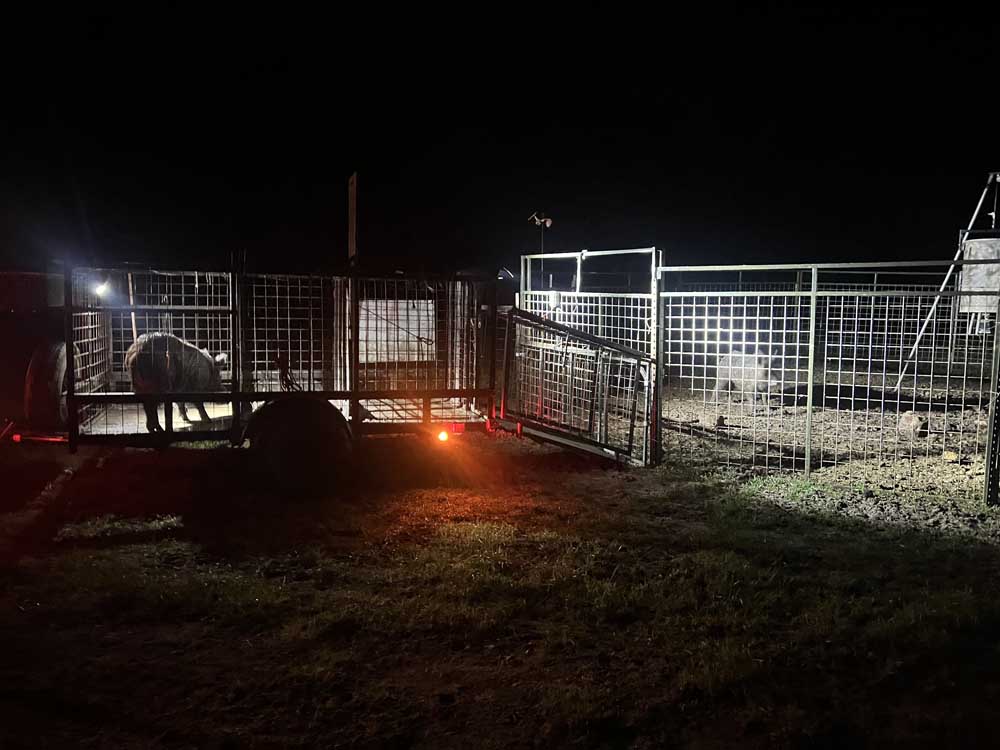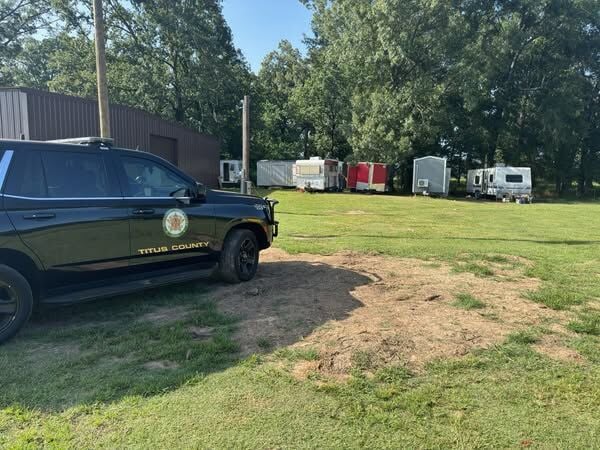This Little Piggy: Wild pigs have become East Texas trapper’s business.
Published 1:32 pm Friday, April 12, 2024

- column pig2.jpg
There is a definite love/hate relationship between Texans and wild pigs.
Hunters love them because they offer a target-rich environment when deer hunting is slow or ended. They are a lot easier to hunt than coyotes plus they are edible.
Landowners, on the other hand, hate them with a passion as they cause millions of dollars a year in damage to agricultural crops, hay fields and even landscaping in the state. Even hunters can join that hate list when the pigs learn to congregate around feeders stealing corn intended for their deer.
The Texas wild pig problem may be unsolvable especially in East Texas where they escape to thick river and creek bottoms becoming almost untouchable by hunters. Even in other parts of the state, where helicopters are often used for hunting, it is only a case of killing what can be seen, but not total eradication.
With more than 3 million estimated roaming the state, the pigs are not going away any time soon. And that, with Texans being Texans, has created a niche industry to at least control their numbers on individual properties.
The helicopter operations in Central Texas make the biggest splash, but are not effective in much of the Post Oak and Pineywoods regions. Traps still rule in those areas for large-scale removal, and they have come a long way from the old box trap.
Lindale’s Mason Griffin is one of the entrepreneurs who has learned to make a silk purse out of sow’s ear. Having started with one trap, the 21-year-old is now running five round traps almost continuously on properties across East Texas, and with demand like it is looks to add more.
“I have a love for the outdoors. I knew how to hunt pigs pretty well, and I started reading more about it, and read about traps you drop with a phone. Now I video monitor traps to make the biggest catches possible,” Griffin said recently after picking up a sounder in Hopkins County.
Griffin typically works within two hours of his home, but will go farther if there are enough pigs.
Wild pig trapping is an inexact science, but over time Griffin has learned a lot about when and where results are the most successful.
“I have trapped at 7 a.m. and midnight. Right at dusk seems like the perfect time,” Griffin said.
While the pigs may show up at any time, he has found when the weather is consistent for several days, like a few days before or after a major weather event is often the best.
With wild pigs found in all but El Paso County in farthest West Texas, they have proven they can exist in any type of terrain, climate and conditions. In East Texas, as well as other parts of the state though, they are partial to areas with water.
“Any place that has river bottom is going to hold pigs. Places that are close to water, lakes, that is predominately where they are going to be,” Griffin said.
However, he added that heavily farmed areas also attract pigs as do sanctuaries such as non-hunted private property or even a state park. Griffin was recently trapping a site adjacent to a state park and after six gate drops had collected a record for him of 64 pigs with more continuing to funnel in.
When called to a site Griffin starts out by surveying the property looking for areas utilized by the pigs.
“It only takes one track to know,” he said.
Then he begins a feeding program with corn, which once they discover it is like a drug to the animal. He then uses cameras to monitor the site to determine how many pigs are coming to it.
Griffin then sets up a 28-foot diameter round trap around the feeder, leaving the gate open to allow the pigs to acclimate to it. If it is in a pasture with cows Griffin will construct a temporary barbed wire fence outside the round trap to keep cattle from getting in.
Griffin said he uses round traps not only because he can trap more at a time, but he believes mature pigs learn about square traps and will avoid them.
“Honestly, I have not seen them avoid the round traps. I set a trap last night and when I pulled up to pick them up, I spooked off eight pigs that were on the outside. I think because of its size they don’t freak out,” he said.
Once the pigs are coming to bait regularly it is game on.
When a trap is dropped the pen may contain boars, sows and shoats or piglets. He said the biggest will weigh 80 to 140 pounds. Anything much larger is rare because of how hard wild pigs forage for food.
And while they are seldom the target of gun hunters, getting the younger pigs and shoats out is important because unlike the larger, older pigs, the young ones have more breeding years ahead of them.
The goal is to get about 70% of the population when he traps an area. Even at that rate the best that can done is to maintain pig numbers because the animals are so prolific. At that level Griffin said landowners typically get six months to a year’s relief from the animals.
There actually is a market for the animals from a dime to 40 cents per pound, with the larger pigs bringing the most money.
Griffin charges $200 to set up a trap and an additional $10 a head for grown pigs and $5 for shoats to haul them off. He does wave the transport fee for senior citizens and veterans.
For more information contact him at 903-941-0038.






